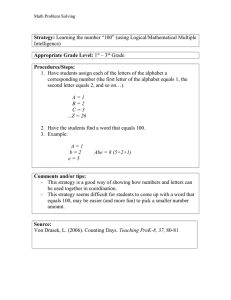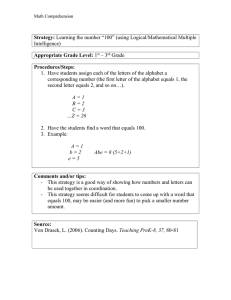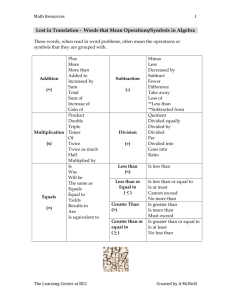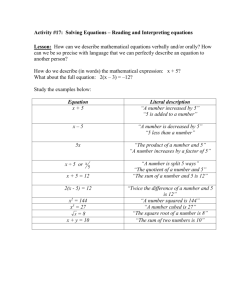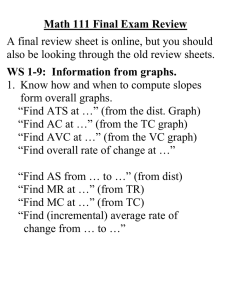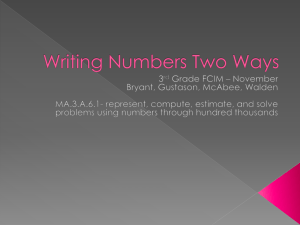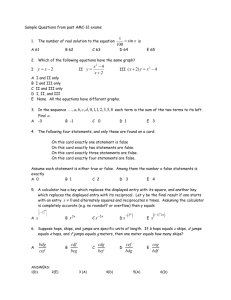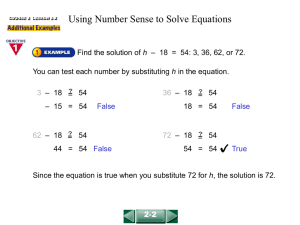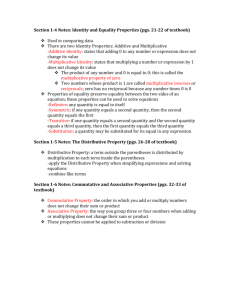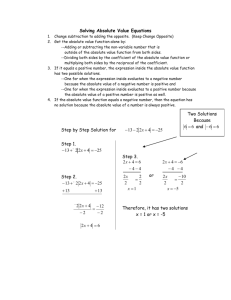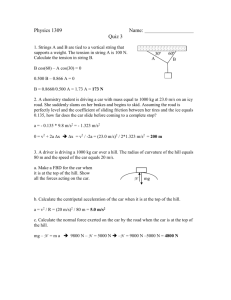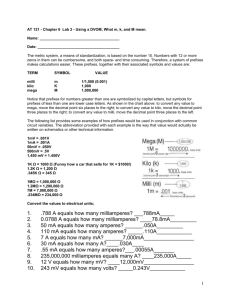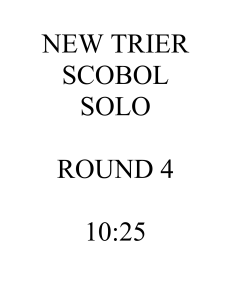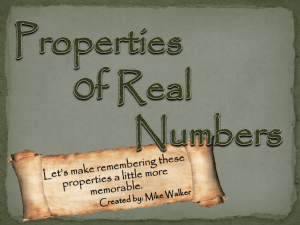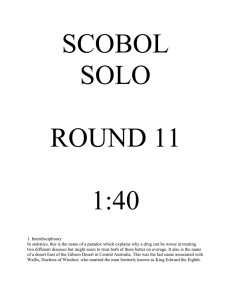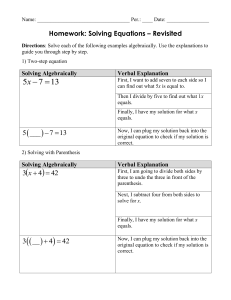Math Pacing Plan 2012
advertisement
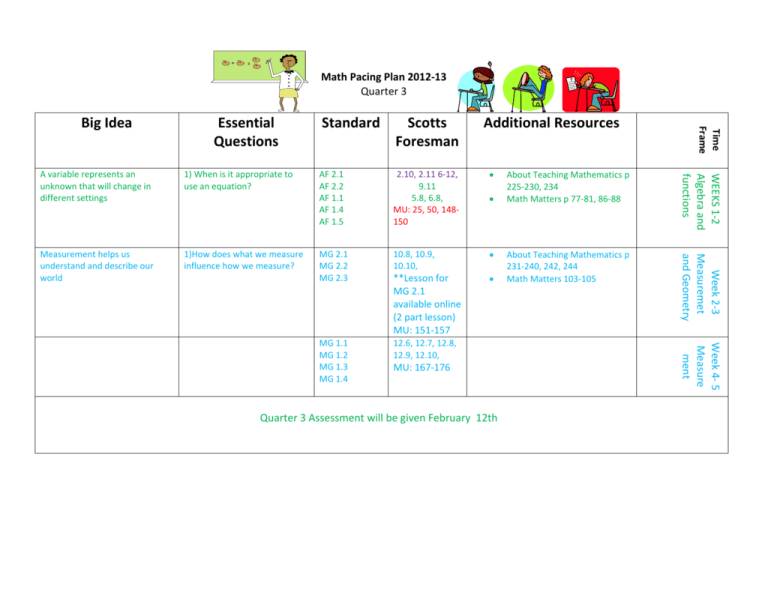
Math Pacing Plan 2012-13 Quarter 3 Essential Questions Measurement helps us understand and describe our world 1)How does what we measure influence how we measure? Additional Resources 2.10, 2.11 6-12, 9.11 5.8, 6.8, MU: 25, 50, 148150 MG 2.1 MG 2.2 MG 2.3 10.8, 10.9, 10.10, **Lesson for MG 2.1 available online (2 part lesson) MU: 151-157 MG 1.1 MG 1.2 MG 1.3 MG 1.4 12.6, 12.7, 12.8, 12.9, 12.10, MU: 167-176 Quarter 3 Assessment will be given February 12th About Teaching Mathematics p 225-230, 234 Math Matters p 77-81, 86-88 About Teaching Mathematics p 231-240, 242, 244 Math Matters 103-105 Week 4- 5 Measure ment AF 2.1 AF 2.2 AF 1.1 AF 1.4 AF 1.5 Week 2-3 Measuremet and Geometry 1) When is it appropriate to use an equation? Scotts Foresman WEEKS 1-2 Algebra and functions A variable represents an unknown that will change in different settings Standard Time Frame Big Idea Standards AF 2.1 AF 2.2 Know and understand that equals added to equals are equal Know and understand that equals multiplied by equals are equal AF 1.1 Use letters, boxes, or other symbols to stand for any number in simple expressions or equations (e.g., demonstrate an understanding and the use of the concept of a variable). AF 1.4 Use and interpret formulas to answer questions about quantities and their relationships. AF 1.5 Understand that an equation such as y = 3x + 5 is a prescription for determining a second number when a first number is given. MG 2.1 Draw the points corresponding to linear relationships on graph paper (e.g., draw 10 points on the graph of the equation y = 3x and connect them by using a straight line). MG2.2 Understand that the length of a horizontal line segment equals the difference of the x-coordinates. MG 2.3 Understand that the length of a vertical line segment equals the difference of the y -coordinates. MG 1.1 Measure the area of rectangular shapes by using appropriate units, such as square centimeter (cm 2), square meter (m 2), square kilometer (km 2), square inch (in 2), square yard (yd 2), or square mile (mi 2). MG 1.2 Recognize that rectangles that have the same area can have different perimeters. MG 1.3 Understand that rectangles that have the same perimeter can have different areas. MG 1.4 Understand and use formulas to solve problems involving perimeters and areas of rectangles and squares. Use those formulas to find the areas of more complex figures by dividing the figures into basic shapes.

